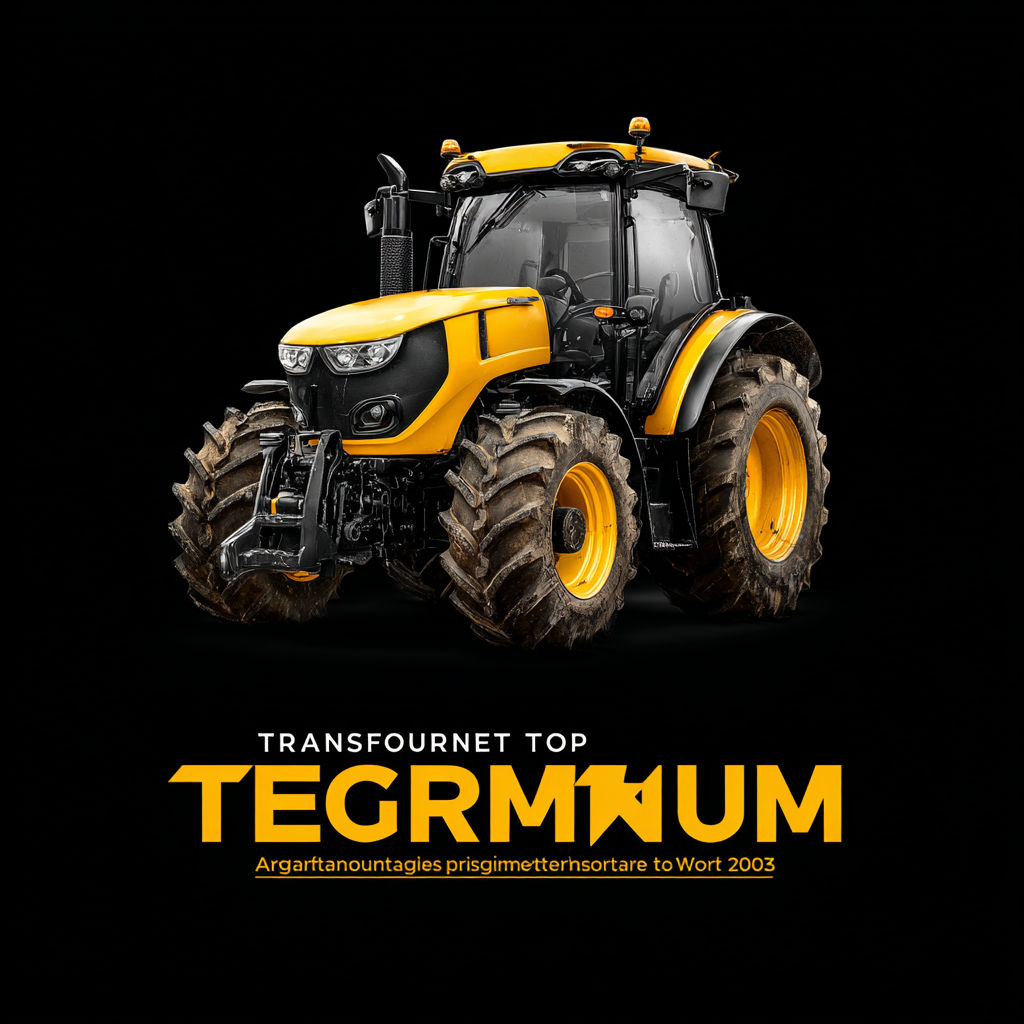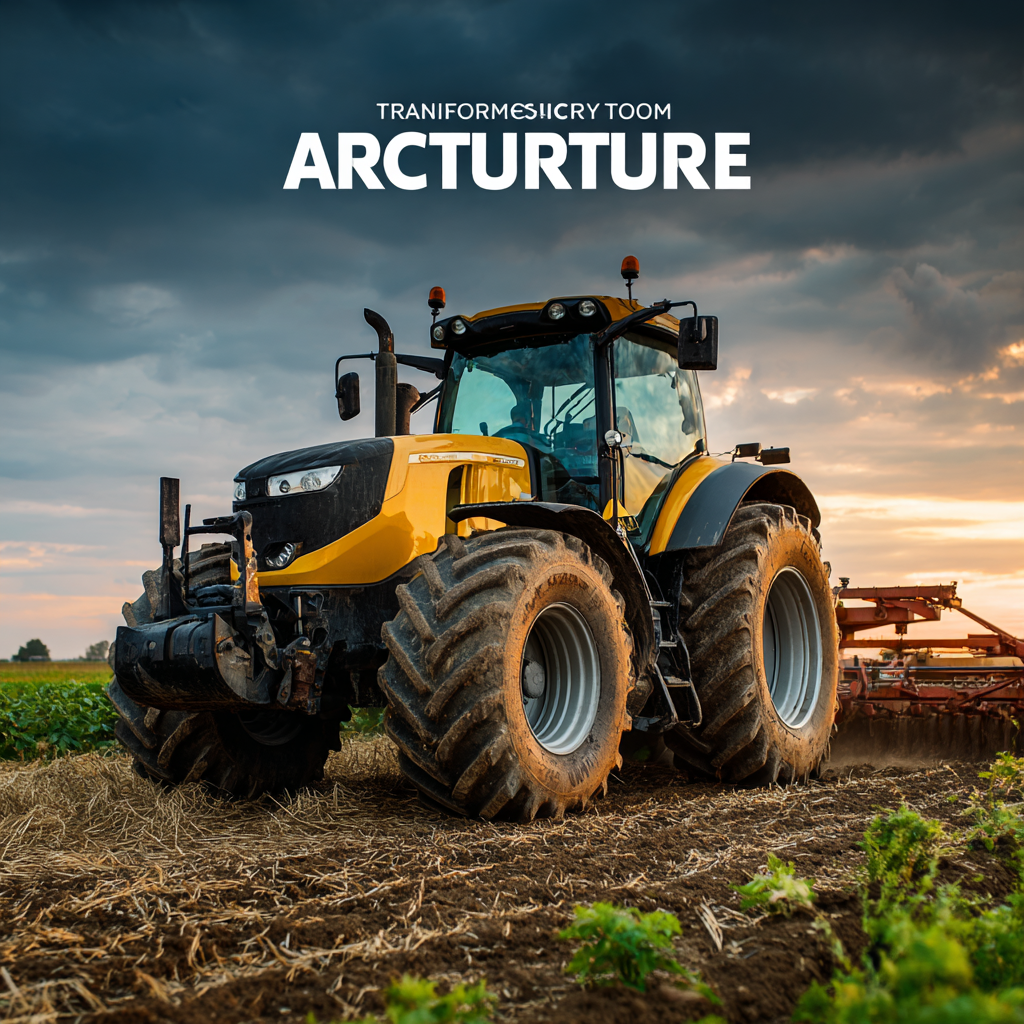The agriculture equipment industry is on the brink of a transformative wave, with advancements poised to reshape the landscape by 2025. According to a recent report from the International Agricultural Machinery Association, the global market for agriculture equipment is expected to reach $200 billion by 2025, driven by increasing demand for enhanced productivity and sustainability in farming practices. As we delve into the emerging trends, it is essential to recognize how innovations such as automation, precision farming technologies, and eco-friendly machinery are not just enhancing efficiency but also setting new industry production standards. These trends reflect a broader commitment to integrating smart technologies and data analytics into agricultural operations, ultimately paving the way for more sustainable and efficient farming methods.

As we advance into 2025, the agricultural sector is poised for a seismic shift driven by emerging technologies. Artificial intelligence (AI) and remote sensing (RS) are spearheading this transformation, particularly in pest management. By leveraging AI algorithms and real-time monitoring, farmers can achieve rapid detection and precise interventions, which is projected to reduce pesticide usage by up to 90% for certain crops. This evolution not only enhances yield but also promotes eco-friendliness in agricultural practices.
Moreover, the integration of AI-powered drones in precision agriculture is set to change the landscape entirely. These drones facilitate accurate surveying and data collection, significantly improving the efficiency of monitoring crop health and the optimization of resources. Industry reports indicate that innovations in agricultural technology and machinery could increase overall efficiency by as much as 30%, leading to more sustainable farming operations. As we look to the future, the convergence of these advanced technologies is revolutionizing how we grow food, ensuring that agriculture remains both productive and sustainable in an ever-changing environment.
As the agricultural sector evolves, sustainability is taking center stage in the development of farming equipment. Eco-friendly technologies are no longer just an addition; they are becoming essential components of modern agriculture. In 2025, we can expect a surge in innovations aimed at reducing environmental footprints while enhancing productivity. This shift is a response to growing concerns about climate change and resource depletion, pushing manufacturers to create more energy-efficient machines that utilize renewable resources and minimize waste.
One notable trend is the integration of smart technology in eco-friendly equipment. Precision farming tools, equipped with advanced sensors and data analytics, are allowing farmers to optimize their resource use. For instance, smart irrigation systems can significantly reduce water consumption by delivering precise amounts of moisture based on real-time soil conditions. Additionally, electric and hybrid tractors powered by renewable energy sources are emerging as a viable alternative to traditional gasoline engines, further decreasing greenhouse gas emissions from the agriculture sector. By embracing these sustainable practices, the future of farming not only promises increased efficiency but also a healthier planet for generations to come.
The agricultural equipment industry is on the brink of a technological revolution, primarily driven by the integration of IoT (Internet of Things) and AI (Artificial Intelligence) in smart farming. According to a report by MarketsandMarkets, the smart agriculture market is projected to reach $22 billion by 2025, growing at a CAGR of 12.2% from 2020. This remarkable growth is largely fueled by the demand for increased productivity and efficiency in farming operations, facilitated through advanced machinery equipped with IoT sensors and AI algorithms.
Implementing IoT in agricultural machinery allows farmers to collect real-time data on soil conditions, crop health, and weather patterns. This data-driven approach enables precise decision-making, from irrigation management to pest control. AI enhances this further by analyzing vast datasets to optimize planting schedules and yield predictions. A report from Deloitte highlights that farmers implementing AI-driven tools could potentially increase their yield by up to 20%, representing a substantial return on investment. As we look towards 2025, the synergy between IoT and AI in agricultural machinery promises not only to transform farming practices but also to redefine the future of food production on a global scale.
This chart illustrates the anticipated growth in the adoption of smart farming technologies in 2025, focusing on key areas such as IoT integration, AI utilization, and autonomous equipment.
As we look toward 2025, the role of drones in precision agriculture is set to transform the farming landscape dramatically. Drones are poised to become indispensable tools for farmers seeking to optimize their operations through advanced data collection and analysis. By leveraging aerial imagery and real-time monitoring capabilities, farmers can gain critical insights into crop health, soil conditions, and irrigation needs, leading to more informed decision-making and efficient resource management.

Moreover, the integration of artificial intelligence with drone technology will further enhance precision agriculture. AI systems can analyze vast amounts of data gathered by drones to identify patterns and predict outcomes. For instance, farmers will be able to detect pest infestations or nutrient deficiencies earlier than ever before, allowing for targeted interventions that minimize chemical use and promote sustainable practices. As these technological advancements continue to evolve, the future of agriculture will be characterized by greater productivity, resilience, and environmental stewardship.
The future of agriculture is being revolutionized by the rapid integration of automation and robotics, addressing the increasing pressure on food production systems driven by population growth. According to a recent market report, the smart agriculture market is projected to significantly expand, with advancements such as precision farming and livestock monitoring emerging as crucial components of this transformation. The market for smart agriculture is expected to grow by leaps and bounds, driven by the need for efficient and sustainable farming solutions.
Robotic systems are at the forefront of enhancing operational efficiency in agriculture. With the ability to perform complex tasks through AI-driven algorithms, these robots not only automate labor-intensive processes but also contribute to precision agriculture by delivering targeted interventions. As highlighted in industry analyses, the adoption of agricultural robots helps alleviate labor shortages while improving crop yields and reducing operational costs. As the global special robot industry blossoms, it is anticipated that the market will reach significant figures, with projections indicating a potential USD 140 billion market by 2024, showcasing the rapid evolution of this sector.
The automation wave in agriculture is not just about technology; it is also a response to ecological pressures and modern agricultural challenges. With innovations like smart irrigation systems and pest detection robots becoming commonplace, the sector is on the brink of a renaissance that marries efficiency with sustainability. As we look towards 2025, it will be critical to monitor how these advancements reshape agricultural landscapes, offering solutions that not only enhance productivity but also adhere to environmentally friendly practices.
